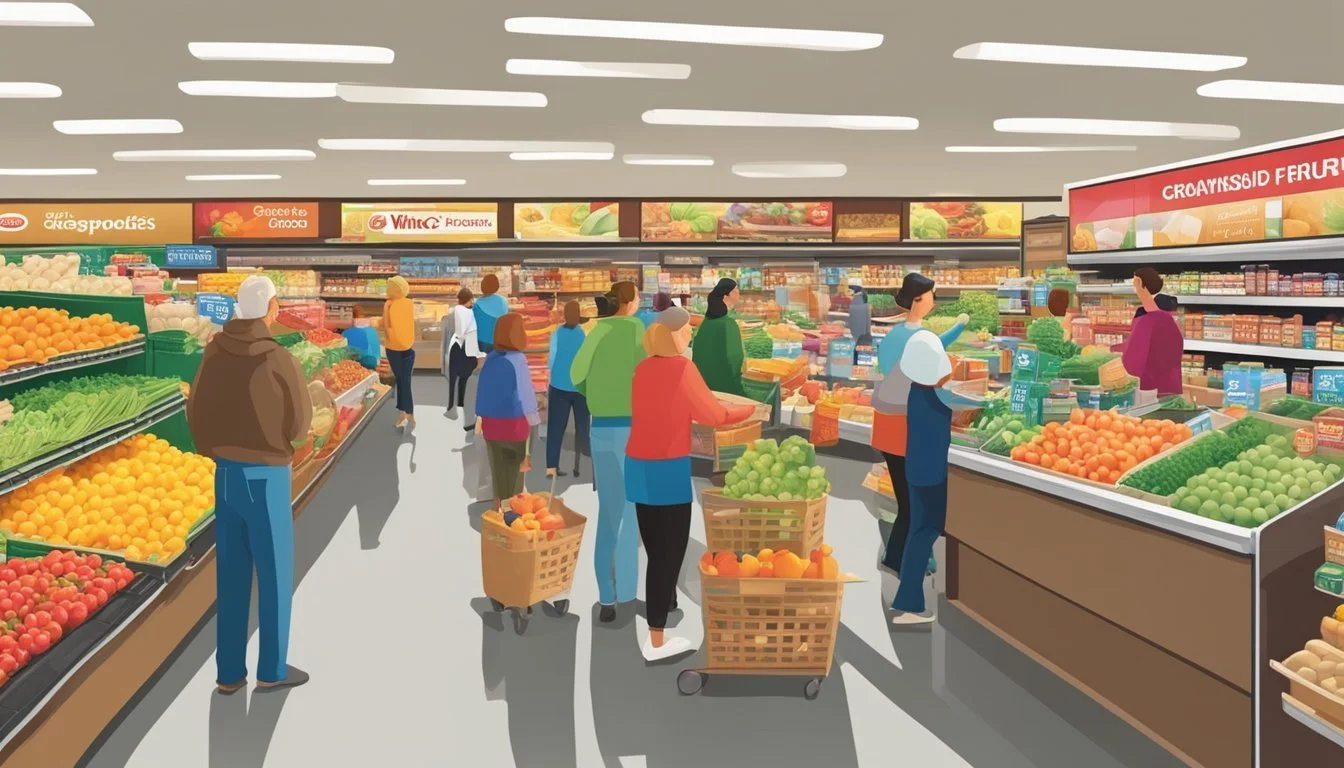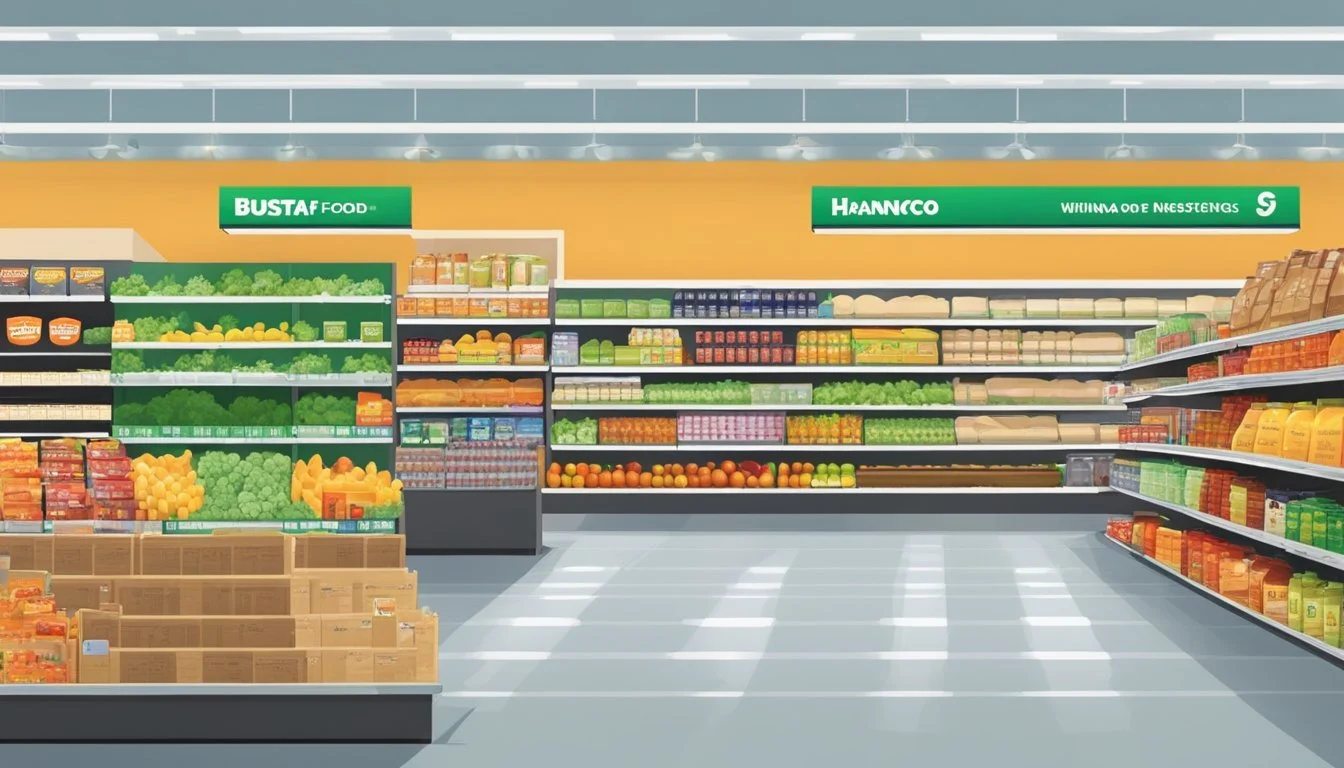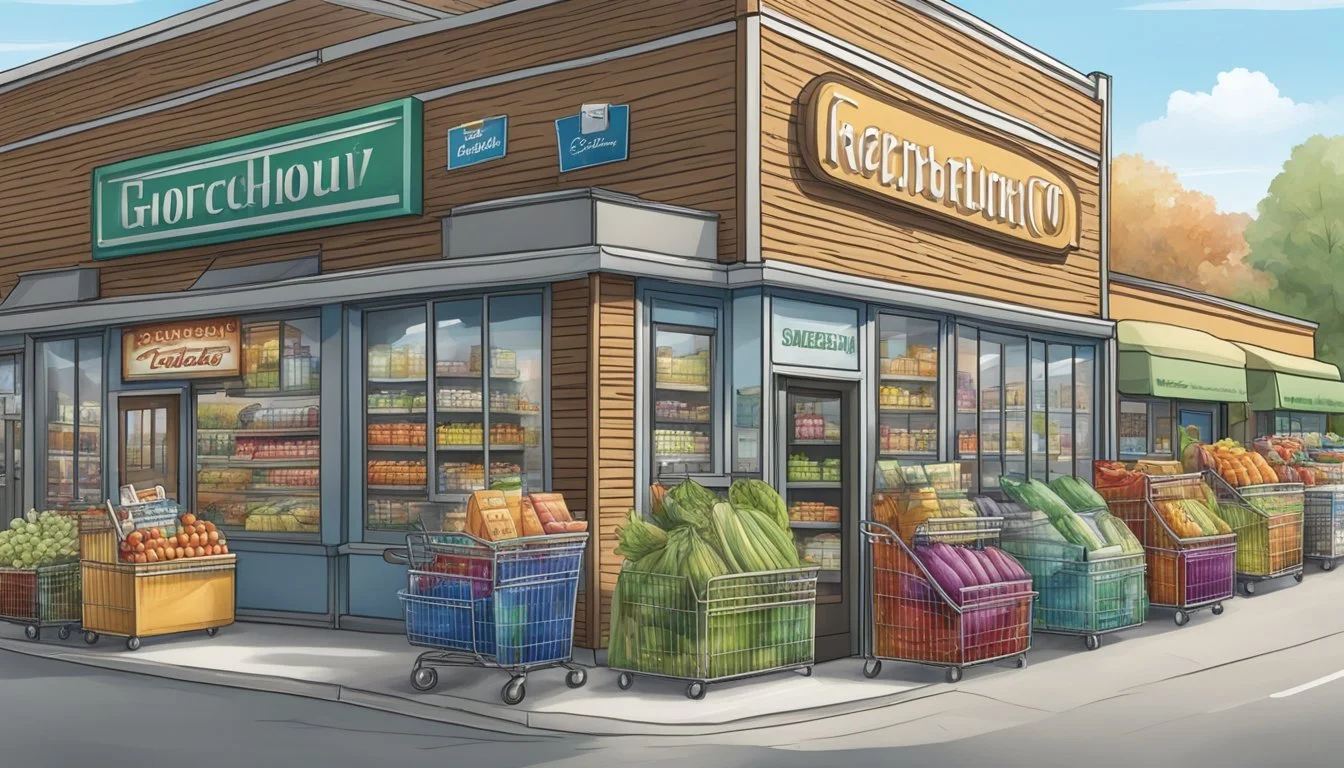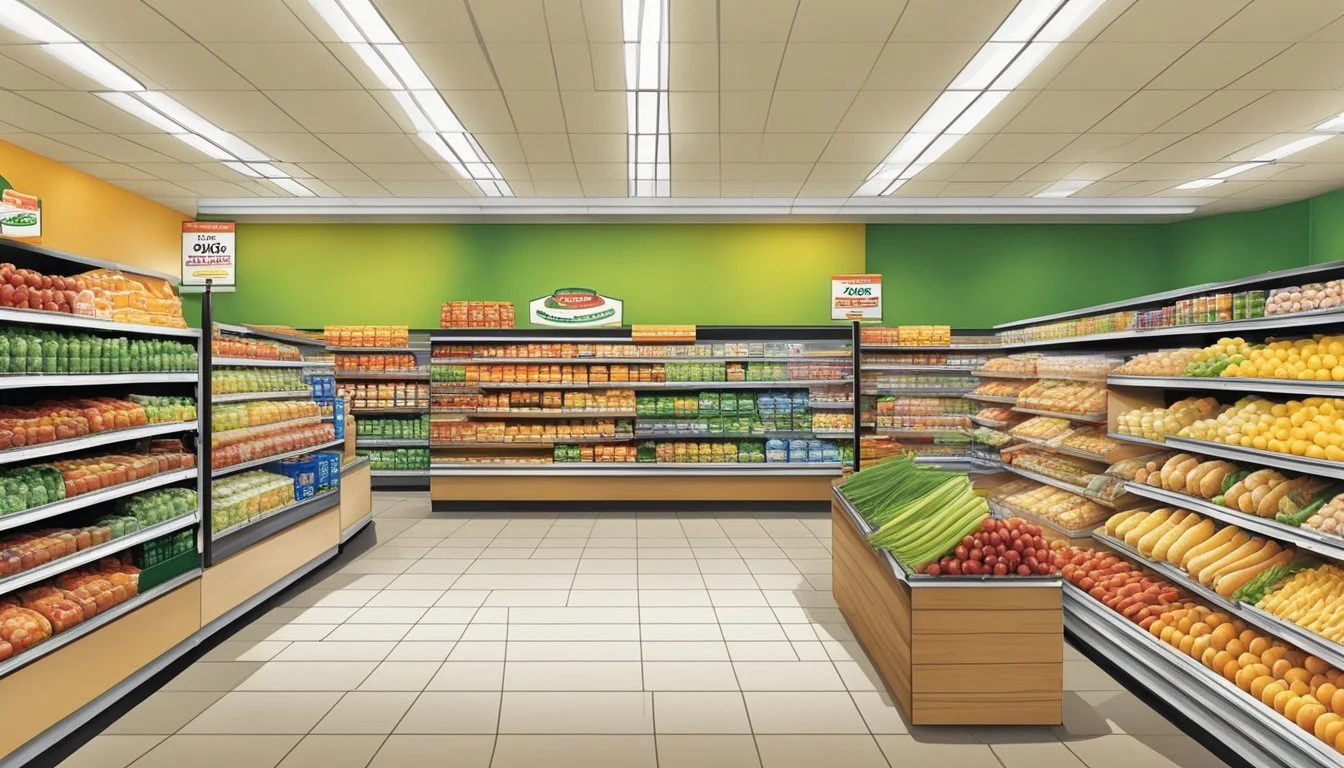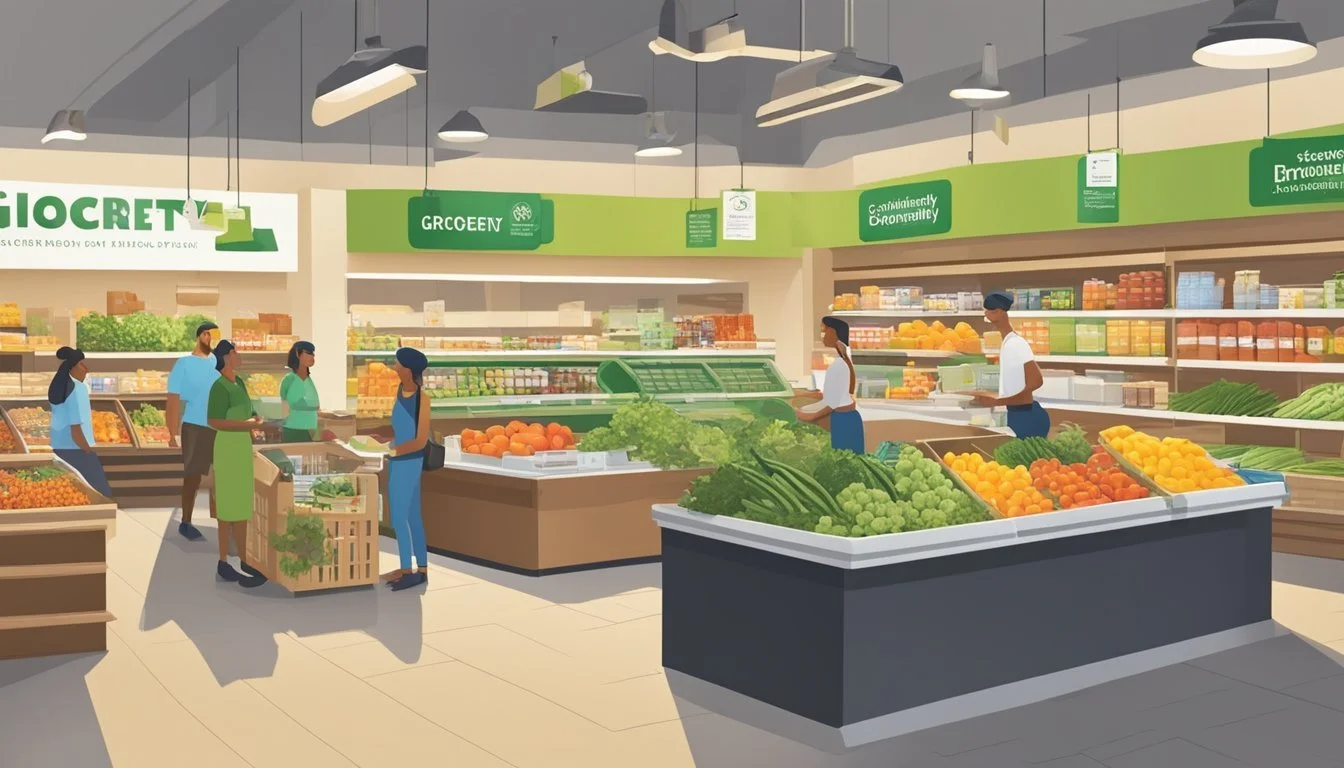Hannaford vs WinCo Foods
A Comprehensive Comparison of Prices, Selection, and Service
Choosing the right grocery store can significantly impact your budget and shopping experience. Hannaford and WinCo Foods are two popular options that offer competitive prices and quality products. While both stores aim to provide value, they have distinct characteristics that set them apart.
For overall savings and low prices, WinCo Foods typically edges out Hannaford. WinCo's focus on its own brand products and efficient operations allows it to offer prices that are often 12-30% below average. Hannaford, however, still provides good value with prices around 11% lower than the all-store average in some regions.
Beyond pricing, factors like store layout, product selection, and customer service play crucial roles in determining which grocery store better suits individual needs. Examining these aspects alongside price comparisons can help shoppers make an informed decision between Hannaford and WinCo Foods.
Company Overviews
Hannaford and WinCo Foods have unique histories spanning over a century. Both companies started as small local businesses and grew into major regional supermarket chains, though they followed different paths to reach their current positions in the grocery industry.
History of Hannaford
Hannaford's roots trace back to 1883 when Arthur Hannaford began selling fruits and vegetables from a cart in Portland, Maine. The business expanded gradually, opening its first store in 1902. By the 1920s, Hannaford Brothers Company had become a wholesale grocery distributor.
The company entered the retail supermarket business in 1944. Hannaford experienced significant growth in the following decades, expanding across New England and upstate New York. In 1987, Hannaford went public on the New York Stock Exchange.
A major milestone came in 2000 when Delhaize Group acquired Hannaford. Today, Hannaford operates as part of Ahold Delhaize, a global retail group formed in 2016. The chain now has over 180 stores across five Northeastern states.
History of WinCo Foods
WinCo Foods began in 1967 as a discount warehouse grocery store called Waremart in Boise, Idaho. Founded by Ralph Ward and Bud Williams, the company focused on a no-frills, low-price approach to selling groceries.
The business grew steadily, expanding to other states in the Northwest. In 1999, the company changed its name to WinCo Foods, an acronym for Winning Company. A significant development occurred in 1985 when WinCo became employee-owned through an Employee Stock Ownership Plan (ESOP).
WinCo has continued its expansion, now operating over 130 stores across ten western states. The company maintains its commitment to low prices and a warehouse-style shopping experience. WinCo is known for its bulk foods section and 24-hour operations in many locations.
Pricing Comparison
Hannaford and WinCo Foods both aim to offer competitive prices, but they employ different strategies to attract budget-conscious shoppers. Their pricing models impact everyday costs and special promotions.
Everyday Prices
WinCo Foods consistently offers lower everyday prices compared to Hannaford. WinCo's prices are typically 20-30% below average supermarket rates. This translates to significant savings for regular shoppers.
Hannaford's everyday prices are generally about 11% lower than the average supermarket. While not as low as WinCo, this still represents meaningful savings for customers.
WinCo achieves its low prices through a no-frills approach. They operate as a warehouse-style store with minimal decor and services. Customers bag their own groceries, further reducing costs.
Hannaford maintains a more traditional supermarket format. This results in slightly higher prices but offers a different shopping experience.
Discounts and Deals
Both stores offer various discounts, but their approaches differ. WinCo Foods focuses on consistently low prices rather than frequent sales or promotions. They rarely use coupons or loyalty programs.
Hannaford provides more traditional discount options. These include:
Weekly sales circulars
Digital coupons
A loyalty program offering personalized deals
Hannaford's approach allows savvy shoppers to stack discounts for additional savings. However, this requires more effort from customers to maximize their savings.
WinCo's bulk bin section offers another way to save. Customers can purchase exactly the amount they need, often at lower per-unit prices than packaged goods.
Range of Products
Hannaford and WinCo Foods offer diverse product selections to meet customer needs. Both stores stock a wide array of grocery items, though there are some key differences in their offerings.
Private Label Brands
Hannaford's private label, "Hannaford," encompasses over 5,000 products across various categories. These items often provide cost-effective alternatives to national brands while maintaining quality standards.
WinCo Foods features its own private label, "WinCo Foods," which includes a range of grocery staples and household items. The store emphasizes value pricing on these generic products.
Both chains prioritize competitive pricing for their store brands, allowing customers to save money on everyday essentials. Quality levels of private label items can vary between the two retailers.
Organic and Specialty Items
Hannaford offers an extensive selection of organic produce and specialty foods. Their "Nature's Place" line focuses on natural and organic products, catering to health-conscious consumers.
WinCo Foods provides a more limited range of organic options compared to Hannaford. However, they do stock some organic produce and natural food items to meet growing demand.
Hannaford tends to have a broader variety of specialty and gourmet products. This includes international foods, artisanal cheeses, and specialty baking ingredients.
WinCo Foods generally focuses more on mainstream grocery items and bulk foods. Their selection of specialty products may be more limited than Hannaford's offerings.
Shopping Experience
Hannaford and WinCo Foods offer distinct shopping experiences that cater to different customer preferences. Their store layouts, designs, and checkout processes impact the overall grocery trip.
Store Layout and Design
Hannaford stores typically feature a clean, well-organized layout with wide aisles and clear signage. Fresh produce is often prominently displayed near the entrance, creating an inviting atmosphere. The stores have a modern feel with bright lighting and a logical flow from section to section.
WinCo Foods, on the other hand, embraces a no-frills warehouse-style design. The stores are spacious with high ceilings and industrial shelving. Bulk food sections are a hallmark of WinCo, allowing customers to purchase items in custom quantities. While less aesthetically focused, WinCo's layout prioritizes efficiency and value.
Checkout Efficiency
Hannaford emphasizes customer service at checkout, often staffing multiple lanes and providing baggers to assist shoppers. Self-checkout options are available for those who prefer a quicker exit. The stores generally maintain short wait times, even during peak hours.
WinCo Foods takes a different approach to checkout. The stores are known for their bag-your-own-groceries model, which contributes to lower prices. Checkout lanes are numerous but often unstaffed, relying on customers to complete their own transactions. This system can lead to faster checkout times for experienced shoppers but may be less convenient for those accustomed to full-service options.
Customer Service
Hannaford and WinCo Foods both prioritize customer service, but their approaches differ. Each store has unique strengths in employee knowledge, helpfulness, and customer satisfaction policies.
Employee Knowledge and Helpfulness
Hannaford invests heavily in employee training programs. Staff members receive comprehensive product knowledge and customer service skills training. This results in knowledgeable employees who can assist customers with product inquiries and recommendations.
WinCo Foods takes a different approach. Their employee-owned model fosters a sense of ownership and pride among staff. This often translates to helpful and engaged employees who are motivated to provide good service.
Both stores generally receive positive feedback for staff friendliness. However, Hannaford's more extensive training may give them a slight edge in product knowledge.
Customer Satisfaction and Return Policies
Hannaford offers a "Fresh Guarantee" on perishable items. If customers are unsatisfied with the quality of fresh products, they can return them for a full refund or replacement. This policy applies even without a receipt, demonstrating Hannaford's commitment to customer satisfaction.
WinCo Foods has a straightforward return policy. They accept returns on most items within 30 days of purchase with a receipt. For perishable goods, they typically offer refunds or exchanges if the product is defective or spoiled.
Customer surveys indicate high satisfaction rates for both stores. Hannaford's more generous return policy on fresh items may appeal to some shoppers. WinCo's low prices often lead to positive customer ratings, even with a more standard return policy.
Store Accessibility and Locations
Hannaford operates over 180 stores across five northeastern states: Maine, New Hampshire, Vermont, Massachusetts, and New York. These supermarkets are primarily concentrated in smaller towns and suburban areas.
WinCo Foods has a presence in 10 western and southwestern states, with approximately 130 stores. Their locations are typically found in larger cities and metropolitan regions.
Accessibility varies between the two chains. Hannaford stores are often more conveniently located for rural and small-town residents in the Northeast. WinCo Foods, on the other hand, caters to urban and suburban shoppers in the West.
Store hours differ as well. Most Hannaford supermarkets are open daily from 7 AM to 10 PM. WinCo Foods offers 24-hour service at many locations, providing greater flexibility for customers with non-traditional schedules.
Both grocery store chains have websites with store locators to help customers find the nearest market. Hannaford also offers a mobile app for easy access to store information and digital coupons.
Financial Savvy for Customers
Smart shoppers can maximize savings at Hannaford and WinCo Foods through strategic use of membership programs and credit card offers. These options provide additional value beyond everyday low prices.
Membership Fees and Benefits
Hannaford offers a free loyalty program called My Hannaford Rewards. Members earn 2% back on qualifying store brand purchases and receive personalized coupons. The program has no annual fee or minimum spending requirements.
WinCo Foods does not have a traditional loyalty program. Instead, they focus on keeping prices low for all customers. Their employee-owned model allows them to pass savings directly to shoppers.
Both stores offer digital coupons through their websites and mobile apps. Customers can load deals to their account before shopping to save automatically at checkout.
Credit Card Offers and Rewards Programs
Hannaford partners with Comenity Bank to offer a store-branded Mastercard. Cardholders earn:
2% back on Hannaford purchases
1% back everywhere else
$25 sign-up bonus after first purchase
There's no annual fee. Rewards are issued as store credit once $5 is accumulated.
WinCo Foods does not offer a store credit card. They accept major credit cards but encourage cash or debit to keep costs down. Some cash-back credit cards offer bonus rewards on grocery purchases, which savvy shoppers can use at WinCo.
Families can save by combining store promotions with credit card rewards. Planning purchases around sales and using the right payment method maximizes value on each shopping trip.
Company Strategies and Market Position
Hannaford and WinCo Foods employ distinct business models and competitive strategies to position themselves in the grocery market. Both chains aim to offer value to customers, but take different approaches to pricing, store formats, and growth.
Business Models and Growth
Hannaford operates as a traditional supermarket chain with a focus on fresh foods and local products. The company has over 180 stores across five Northeastern states. Hannaford emphasizes customer service and a pleasant shopping experience in clean, well-organized stores.
WinCo Foods uses a no-frills, warehouse-style model to keep costs low. The employee-owned company has expanded to over 130 stores in 10 Western and Southwestern states. WinCo's strategy centers on offering rock-bottom prices by cutting operational costs and selling in bulk.
Competitive Analysis
Hannaford competes primarily with other full-service supermarkets. The chain differentiates itself through its Guiding Stars nutrition labeling system and emphasis on local and organic products. Hannaford uses targeted promotions and a loyalty program to attract and retain customers.
WinCo positions itself as a low-price leader to compete against warehouse clubs and discount chains like Walmart. The company uses its employee-ownership model and lean operations to undercut competitors' prices. WinCo's bulk foods section and focus on private label products help drive down costs further.
Sustainability and Community Impact
Hannaford Supermarkets has made significant strides in sustainability. The company achieved zero food waste to landfills in 2020, diverting 65 million pounds of food waste that year alone.
Hannaford's Cony Street store in Augusta, Maine set a new standard as the first supermarket in North America to achieve Platinum LEED certification. This store is now pursuing Living Building certification, further cementing Hannaford's commitment to eco-friendly practices.
A study revealed that Hannaford's sustainability initiatives save $15 million annually and prevent over 430 million pounds of greenhouse gas emissions. These efforts benefit both the environment and the company's bottom line.
WinCo Foods, while less publicized, also implements sustainability measures. The employee-owned company focuses on reducing packaging waste and energy consumption in its stores.
Both chains prioritize community involvement. Hannaford supports local food banks and nutrition education programs. WinCo contributes to community organizations and emphasizes hiring locally.
Consumers increasingly value sustainability in their shopping choices. Hannaford's clear sustainability goals and achievements may appeal to environmentally conscious families. WinCo's employee ownership model can resonate with those seeking to support worker-friendly businesses.
Alternative Shopping Options
Consumers have more choices than ever for purchasing groceries beyond traditional supermarkets. Online platforms and local markets provide convenient alternatives to stores like Hannaford and WinCo Foods.
Online Shopping and Delivery Services
Amazon and Target offer extensive grocery selections with home delivery options. Amazon Fresh provides same-day delivery in many areas, while Prime members get free shipping on qualifying orders. Target's same-day delivery service, Shipt, brings groceries to your door within hours.
Instacart partners with local stores to offer delivery from multiple retailers. Walmart Grocery allows online ordering with curbside pickup or home delivery. Many regional chains now provide their own online shopping and delivery services as well.
These options often carry higher fees but save time and offer expanded product selections. Prices may be slightly higher than in-store, but sales and promotions are usually available online too.
Local and Farmer's Markets
Farmer's markets provide fresh, locally-sourced produce and specialty items. Many now accept SNAP benefits and offer lower prices than grocery stores on seasonal fruits and vegetables. Community Supported Agriculture (CSA) programs let consumers buy shares of local farm harvests.
Food co-ops run by members often stock organic and natural products at competitive prices. Some specialize in bulk items or local goods. Urban farms and community gardens also sell affordable produce in some areas.
These markets support local economies and offer unique products. Selection can be limited compared to supermarkets, but quality is often higher for certain items like fresh produce.
Looking Ahead
Grocery retail continues to evolve rapidly. Researchers predict further technological advancements in both Hannaford and WinCo Foods stores. Self-checkout kiosks and mobile payment options are likely to become more prevalent.
Sustainability initiatives are expected to play a larger role. Both chains may increase their focus on reducing packaging waste and offering more eco-friendly products.
Online ordering and delivery services will likely expand. Hannaford and WinCo Foods may invest in improving their e-commerce platforms to meet growing consumer demand for convenience.
Data analytics will shape personalized shopping experiences. Loyalty programs could become more sophisticated, offering tailored discounts and product recommendations.
The Consumerpedia podcast anticipates increased competition from non-traditional grocery retailers. This may push Hannaford and WinCo Foods to innovate and differentiate their offerings.
Store layouts may be reimagined to enhance the shopping experience. This could include more prepared food stations, in-store dining areas, or dedicated spaces for product sampling.
Automation may streamline operations behind the scenes. Advanced inventory management systems could help reduce waste and ensure better product availability.

